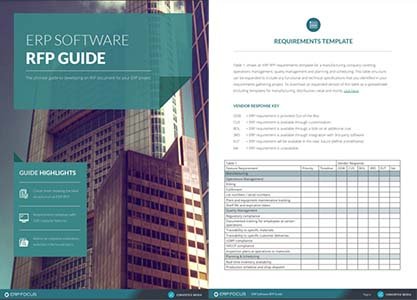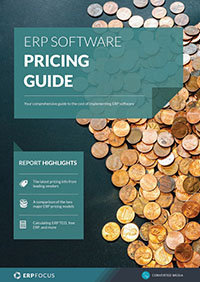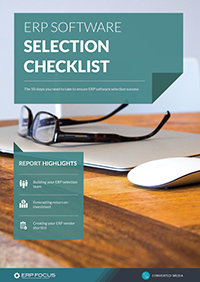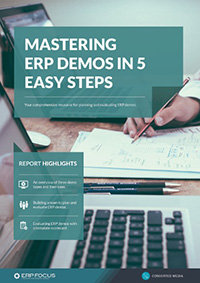How to Create an ERP Software RFP: Business Information
Having already planned out the process of putting together your ERP software RFP, you can begin writing the business information section of the document. In this section of your ERP RFP you will describe your business in such a comprehensive manner that the ERP vendor reading the request can immediately understand your current business state, processes and expectations.
Begin with the basics: your address, number of years in operation, standard industry codes, markets served and similar pertinent information. Now expand on the basics to include any information which will be relevant to a new ERP system. At this stage, you are providing context that will help them develop a proposal that fits your requirements.
Company Culture
Who are your key personnel? What are their backgrounds? A financially-based leadership will want to see a differently worded proposal than a sales-based leadership. What business departments are expanding rapidly? Discuss your company culture and what makes your organization different from others that an ERP vendor may have worked with in the past. Who buys your products – not just the company name but the sort of people who choose your business? All this information is part of your story. All of it is useful to enable the best possible proposal from your prospective ERP vendors.
ERP Expectations
Why are you considering a new ERP at this time? There will be many reasons – talk about a few of them. You want the reader to know the reasons why you are looking to select a new ERP. How will the ERP help you in the future? Are there some specific process improvements you want that hinge on improving your ERP system? You might have a customer asking for new capabilities and you think ERP can help you deliver on the customer’s request. Go into some details. The ERP vendor can return a better proposal when your ERP RFP documents why you are considering a change in your ERP. It is important to note that this section should never become a list of requirements - requirements for ERP are not the same as reasons for ERP.
Legacy Systems
Your ERP software RFP should also include information on your current ERP. What do you like about it? How do you wish it were better? What other ERP systems have you used? All of this background will help your ERP vendor to better know you and your business. Maybe you aren’t using ERP at this time - which is still the case for many businesses. Why might this be the time to begin using ERP?
Hardware & Networking
Finally, it is important to detail your current hardware and networking capabilities. Hardware will be more important if you are looking to implement on-premise software, but networking information will be crucial for a cloud ERP project. Your RFP should not be all about what the vendor can do for you, it is also an important tool for you to assess where your business may fall short when compared with a vendor’s expectations.
In the next article in this series exploring the framework of an ERP software RFP document, we take a look at the RFP section outlining your requirements for ERP software and how to present this information to your prospective vendors.
Free white paper

ERP Software RFP Guide & Template
The comprehensive guide to developing an RFP document for your ERP project

Featured white papers
-

ERP Software Pricing Guide
Get the latest pricing information on over 80 popular ERP systems, and learn how to budget for your ERP project in our free guide
Download -

60-Step ERP Selection Checklist
Get the comprehensive checklist for your ERP selection project
Download -

ERP Demo Guide & Scorecard
Master your ERP demo with 5 easy steps using our free guide (includes demo scorecard)
Download
Related articles
-

A guide to the ERP life cycle
The stages of the ERP life cycle
-

CMMC Compliance: What Aerospace and Defense Manufacturers Need to Know
Key insights on CMMC compliance, deadlines, and securing DoD contracts with CMMC 2.0 certificatio...
-

Seven must-haves for construction ERP
Include these must-have requirements during your Construction ERP selection

